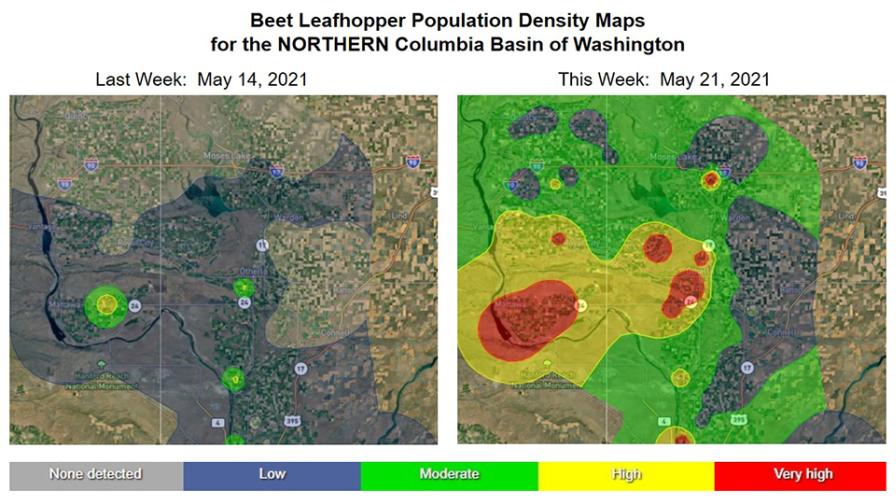A weather-based decision support system that originated 15 years ago in the tree fruit orchards of Washington State has branched into the region’s potato fields. The Pacific Northwest Potato Decision Aid System (DAS) collects regional weather inputs and combines that with research-based data on local pest populations. It then alerts growers to when different insect populations may be active at different stages of their life cycle, helping ag crews schedule controls more precisely.
Researchers from three Pacific Northwest schools — Washington State University (WSU), University of Idaho, and Oregon State University — implemented DAS last May in and around the Columbia Basin of central Washington, where 95% of the state’s potato crop is grown.
Positively Predictable
DAS combines several layers of data to help predict problems that growers may face. And it’s an ever-evolving tool as new data becomes available.
In tree fruit, where administrators have been feeding DAS for 15 years, the system compares real-time weather data with researched models in different areas. So it has 11 insect models, seven horticultural models (such as tree bloom and honey bee foraging windows), and five disease/disorder models.
On the weather side, DAS digests variables such as temperature, rainfall, and leaf wetness. These are all variables impacting crop growth, insect development, and pathogen risk.
“Our system relies on the fact that the emergence of many life stages of insects and plant populations are actually very predictable factors based on temperature or other environmental factors,” says Dave Crowder, associate professor of entomology at WSU.
Growers can use these models to predict when life stage is susceptible, when trees might be blooming, and when labor demands might be highest, among other key insights, he says.
Potato Applications
Since DAS is so new for potato crops, it currently focuses solely on insect management. Other aspects of potato production will be included soon, however, says Carrie Wohleb, regional vegetable crops specialist at WSU.
It’s still a powerful tool. Take potato psyllids. As temperatures rose on May 1, 2021, in Paterson, Washington, near the Oregon border, the Potato DAS showed adult potato psyllids were just starting to move into fields in the region. In turn, the system warned growers to scout for the insect and make management decisions.
Potato DAS also has a model for the Colorado potato beetle. WSU Extension scientists can monitor other insects, such as green peach aphid, beet leafhopper, lygus bug, and potato tuberworm in real time. They use spatial tools to map out the regional risks of the pests.

The process, called interpolation, takes multiple sampled locations and predicts where the insect population might be by taking the weighted average of locations with sampled insects.
“This is very similar in a lot of ways to the way that gridded weather forecasts are actually produced, where you’re pulling in data from physical weather stations and then drawing some kind of interpolation to predict what the weather is across an entire region,” Crowder says.
At any given time, Cowder says, a user can look at data from a specific station.
“They would get a pop up (window) that lists those accumulated degree days and pest abundance and then gives a combined prediction that says, ‘Based on pest abundance in the area and underlying phenology, here is what we think you might want to do,’” Crowder says.
Still to come, Wohleb says, are more options, such as a nematode development model and a pesticide spray guide like that offered on the tree fruit side.
“This is a great time for feedback because things are still new and modifiable,” Wohleb says.